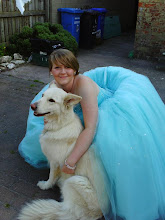
The picture above is of a well known magazine, that's main audience is around the teenage and young adult bracket, but more specifically, females. It shows a large picture of Angelina Jolie, which usually means that she will be focusing in the main story of this magazine issue. Many magazines try not to make there front cover too crowded, yet this one has a lot invoved in it. I think this is done to draw in the target population; teenages.
Another thing, as well as the appearance of many pictures showing the featured stories, there is a lot of writing, things such as story heading, headlines, magazine name and slogans. But the writing has also been well designed to capture the focus audience by using lively colours, and bold writing, to make it relate to the younger readers, opposed to the older ones.
The fact that the pictures surrounding Angelina are much smaller than her picture, and that they are boxed in, connotes that those stories aren't as important as hers, and that people would much more prefer to read about Angelina that anyone else. Another thing that this magazine is doing is referring to diets. Its noticing and stating a big issue in many young girls lives, as they are the most likely of people to worry about there appearance and want to do something about it, so they deliberately put diet plans into there magazine, which has connotations with young girls needing to have to change themselves, in order to be better people.
The people/company who produce this magazine, also produce many others, such as; 'Pick me up', which is aimed at the older woman, becasue it has more true life stories, and younger people are more about reading and finding out about what the celebrities are doing. And the other one is 'Whats on TV?' This is just a magazine to show what is on the television. But both these productions, as well as 'Now' magazine are very popular, so it shows that the producers of these magazine have very good knowledge of magazine and how to present them and what to put in them.
One of the implicit values captured within this magazine, is the fact that people everywhere, no matter who you are; rich or poor, famous or not famous, everyone has problems, and everyone has to learn how to deal with them in there own ways. It also shows that not everyone is perfect, and although the people shown in this magazine are well known, and are thought of as perfection and as a higher class of people than the people reading it, it tries to show that that's not entirely true, and that many people are the same, no matter what the differences.

No comments:
Post a Comment